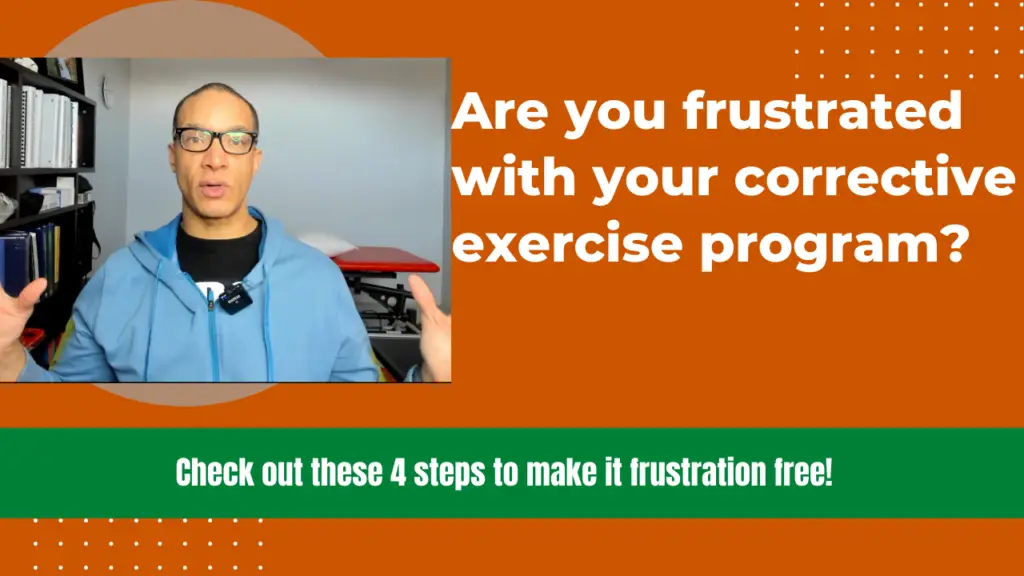
Click on the image to watch the video
Getting injured isn’t just painful it’s often maddening, especially when a corrective exercise program seems slow, confusing, or never-ending. The good news? There are concrete ways to break the cycle of frustration, so you can move forward in your recovery and come back stronger than ever.
Step 1: Get Specific and Get Curious
Most frustration comes from generic, surface-level advice—“just do X for your knee,” or “try this for your back.” But lasting results require a specific, holistic perspective. Zoom out: assess all the tissues, joints, and habits involved, not just the “squeaky wheel.” Don’t be afraid to ask more questions of your coach, read beyond the basics, or demand an individualized approach that’s tailored to the real cause of your issue—not just the symptoms.
Step 2: Stop the Comparison Game Own Your Pace
Corrective exercise takes time. Symptoms often last because underlying compensations have built up for months or years. Don’t get stuck comparing yourself to “fast healers” or internet testimonials. Accept that the process is nonlinear, and that small, focused wins build the fastest long-term progress. The less negative self-talk, the easier it gets to keep showing up and doing the right things every day.
Step 3: Expect “Productive” Discomfort Not Suffering
It’s totally normal for corrective exercises to feel challenging, awkward, or sometimes uncomfortable—especially if soft tissue is stiff, joints are sticky, or new patterns are required. But true suffering means you’re doing the wrong exercise, too much, too soon, or fighting the process. Learn to distinguish between healthy training discomfort and bad pain. Treat each session as a chance to practice patience, breathe deeply, and learn from experience—not just to “grind through.”
Step 4: Find Acceptance and Focus on What You Control
Frustration around injury often comes from wanting to skip steps or fast-forward the process. Instead, accept your current state, focus on consistent progress, and get curious about deeper aspects of health, movement, or mindset you may have previously overlooked. The more you accept and fully engage, the faster—and more lasting—your results will be. (And if you get stuck, find a trusted guide or support community.)
[Segmental Muscle Strengthening]
Corrective exercise is much more than a fix for a body part it’s a mindset and a toolkit for lifelong mobility, injury-prevention, and lasting change. Embrace the journey, adjust your expectations, and celebrate progress one step at a time.
it’s not just working out, it’s building a foundation for a better life.
Find out more @

Leave a Reply